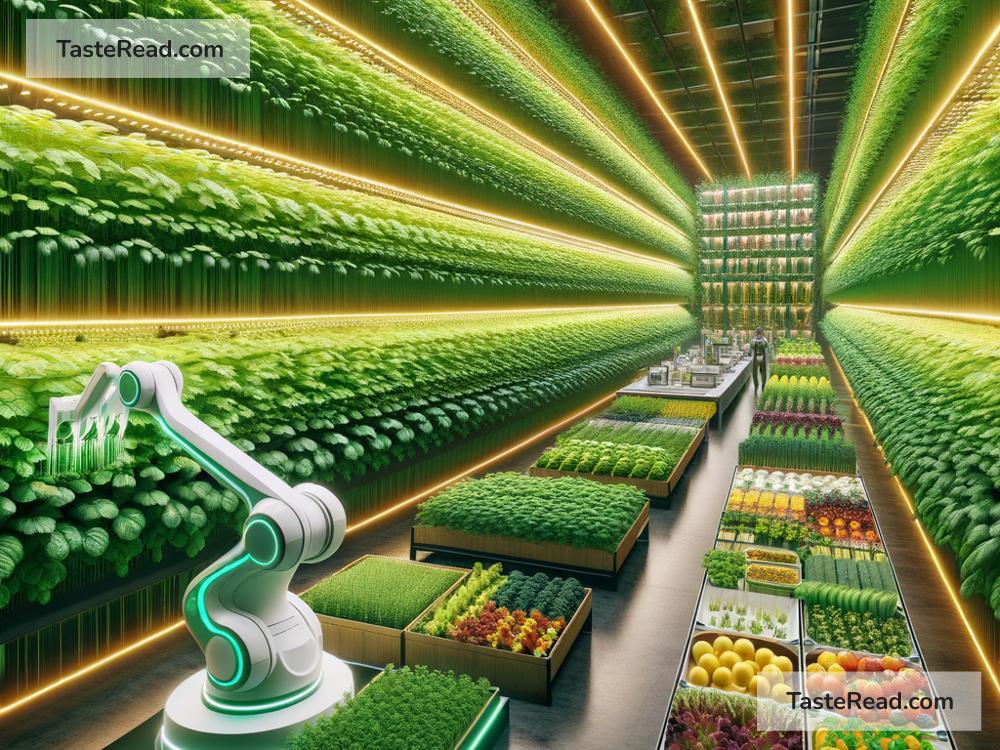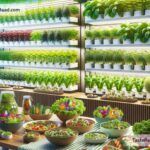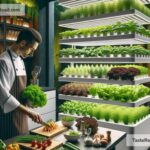The Future of Food: Building Sustainable Systems
In recent years, the future of food has become a topic of global concern. As the world’s population grows and environmental issues like climate change intensify, it’s clear that our current food systems cannot keep up. We need new ways of growing, distributing, and consuming food that are healthier for people and the planet. Let’s dive into what the future of food might look like, and how sustainable systems could help meet the challenges ahead.
The Problem We Face
Today, much of the world’s food system is unsustainable. Large-scale agriculture often harms the environment by using too much water, cutting down forests, and relying heavily on chemical pesticides and fertilizers. These practices damage ecosystems, contribute to global warming, and decrease biodiversity—the variety of plants, animals, and microorganisms that keep natural systems healthy.
At the same time, millions of people worldwide suffer from hunger or malnutrition, while others waste massive amounts of food. This imbalance shows that our systems are broken. If we don’t make changes, we might struggle to produce enough food for everyone in the near future, especially as the global population is expected to reach 10 billion by 2050.
What Is Sustainable Food?
Sustainable food is food that is produced, distributed, and consumed in a way that protects the planet and supports people’s health. It focuses on farming practices that are kinder to the environment, reducing waste, and creating fair systems for food access across communities. Imagine a world where farming doesn’t pollute rivers, forests are preserved, and everyone has enough nutritious food to eat. That’s the vision sustainable food systems aim to achieve.
Future Food Technologies
Technology will play a huge role in shaping the future of food. Innovations in agriculture, manufacturing, and distribution are already starting to create systems that are more efficient and kinder to the planet. Here are a few examples of exciting advancements:
1. Vertical Farming
Vertical farms grow crops in stacked layers inside buildings using techniques like hydroponics (water-based growing) or aeroponics (air-based growing). These farms use less land, water, and pesticides compared to traditional farming. Since vertical farms can be located in cities, they also reduce transportation costs and emissions.
2. Lab-Grown Meat
Also called cultivated or cultured meat, this is meat grown from animal cells in a lab. Unlike traditional meat production, lab-grown meat doesn’t require raising and slaughtering animals, which reduces greenhouse gas emissions and land usage. It could be an ethical and sustainable solution to feeding meat lovers without harming the environment.
3. Plant-Based Proteins
Plant-based meats, made from ingredients like peas, soy, or mushrooms, are becoming increasingly popular. These products mimic the taste and texture of real meat but come with a lower environmental impact. As technology improves, plant-based options are likely to become even more delicious and affordable.
4. AI and Precision Agriculture
Artificial intelligence (AI) can help farmers monitor their crops, predict weather patterns, and grow food more efficiently. Precision agriculture uses tools like drones and sensors to reduce waste and improve yields while minimizing damage to the environment.
5. Alternative Crops
Future food systems may rely more on hardy crops that require fewer resources and can adapt to changing climates. Examples include seaweed, quinoa, and millet, which are nutritious, resilient, and sustainable.
Reducing Food Waste
One of the simplest ways to create a sustainable food system is to reduce waste. Globally, about one-third of all food produced is wasted. This happens at every stage—from farms to grocery stores to households. Imagine throwing away less food and saving resources like water and energy. Governments, businesses, and individuals are starting to take action by improving storage, redistributing surplus food to those in need, and encouraging mindful consumption.
Supporting Local and Regenerative Farming
Local farming connects communities to the food they eat while reducing transportation emissions. Regenerative farming goes a step further by improving soil health, protecting water resources, and increasing biodiversity. These practices benefit both the environment and the economy, and could become a cornerstone of future food systems.
Sustainable Packaging
Plastic waste is another huge problem in today’s food system. In the future, we can expect more biodegradable, recyclable, and reusable packaging made from plant-based materials or innovative technology like edible wraps. Consumers can also help by choosing products with minimal or sustainable packaging.
Eating for the Planet
Our eating habits matter too. Choosing plant-based meals or sustainably sourced products can reduce your environmental footprint and send a message to companies that sustainability is important. Simple changes, like eating less meat or buying locally grown produce, can make a big difference over time.
How You Can Help
The future of food depends on all of us. Governments and corporations have the power to make major changes in policies and production methods, but individuals can also make an impact. Consider these steps to contribute to sustainable food systems:
- Support Local Farmers: Buy fresh produce from farmers’ markets or community agriculture programs.
- Eat More Plants: Incorporate more vegetables, fruits, grains, and legumes into your meals.
- Reduce Food Waste: Plan your meals, store food properly, and compost scraps.
- Educate Yourself: Learn about where your food comes from and choose brands that prioritize sustainability.
Conclusion
The future of food is both an opportunity and a responsibility. With the right mix of innovation, collaboration, and everyday actions, we can build food systems that are better for both people and the planet. By choosing sustainability today, we can ensure a healthier food future for generations to come. Let’s work together to help our world thrive, one meal at a time.


